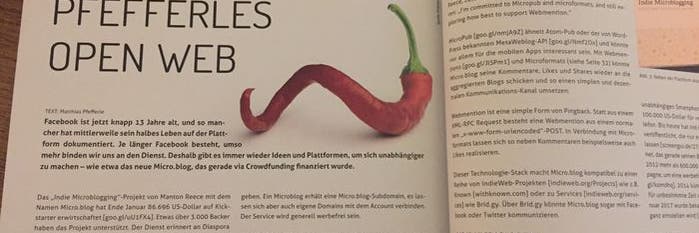


web worker, blogger, podcaster, #openweb advocate and citizen of the #indieweb and the #fediverse.
Open Web Wrangler @ #Automattic
I am currently working on the #ActivityPub plugin and several #IndieWeb (mainly #Webmentions) plugins for #WordPress! Besides of that, I maintain some other small Open Web plugins and try to help out on the #pluginkollektiv.
Follow my blog on the fediverse: "@pfefferle"
This profile is from a federated server and may be incomplete. Browse more on the original instance.